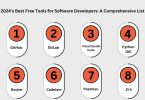With its open-source design, PyTorch is a shining example of machine learning, carefully built by the experts at Facebook’s AI Research lab (FAIR). PyTorch was developed as a response to the need for a powerful and flexible deep learning framework that could handle the demands of both practical applications and rigorous research. The goal of FAIR was very clear: to create a platform that would enable both developers and researchers to work together in the rapidly evolving field of artificial intelligence to experiment, innovate, and quickly prototype ideas. Since then, PyTorch has emerged as a key player in the machine learning community, bridging the gap between cutting-edge research and real-world application with its adaptable computational graph and dedication to user-friendliness.
Key Features of PyTorch:
Dynamic Computational Graph:
Python makes use of a dynamic computational graph, which is unique in that it can change dynamically while the program is running. This dynamic nature improves simplicity and comprehension compared to static graphs in certain deep learning frameworks, which is especially appealing to researchers and experimenters.
Eager Execution: PyTorch responds to calls by initiating activities right away. This is known as the eager execution paradigm. This method streamlines the development process by making debugging easier and encouraging a more natural coding experience.
Flexibility and Expressiveness: Python provides a high-level interface that seamlessly blends both of these qualities. Designed with academics and developers in mind, this tool makes it simple to create complex neural network designs, which enables quick prototyping and experimenting with new concepts.
Rich Ecosystem: PyTorch has a rich ecosystem that includes libraries like torchtext, torchaudio, and torchvision, which expands its uses to a variety of fields like computer vision and natural language processing. PyTorch is more useful and versatile because to its extensive toolset.
Community Support: Researchers, developers, and practitioners make up the PyTorch community, which is a thriving network that encourages cooperation, sharing of knowledge, and problem-solving. PyTorch is widely used in academia and industry as seen by the abundance of online resources and courses available.
Autograd for Automatic Differentiation:PyTorch’s Autograd module makes it easier to achieve automated differentiation, which is essential for deep learning model training. This makes it easier to apply gradient-based optimization methods, which are essential for fine-tuning models.
Debugging Made Easy: PyTorch’s dynamic nature makes debugging easier by revealing intermediate values that are encountered when creating a model. This capability is essential for quickly locating and fixing coding problems.
Deployment & Production Readiness: PyTorch provides tools for deploying models in a real-world setting, going beyond experimentation and study. Its adaptability and preparedness for real-world applications are highlighted by integration with the Open Neural Network Exchange (ONNX) format, which guarantees interoperability with various frameworks and deployment platforms.








